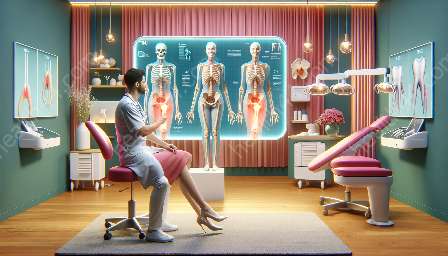The temporomandibular joint (TMJ) plays a vital role in jaw movement, and untreated TMJ disorders can lead to various complications. Addressing these issues is crucial, with physical therapy being a valuable option for managing TMJ disorder. This article explores the potential complications of untreated TMJ, the benefits of physical therapy, and provides comprehensive information about temporomandibular joint disorder (TMJ) and its management.
1. Understanding TMJ Disorder
Before delving into the potential complications, it's important to understand what TMJ disorder entails. TMJ disorder refers to a range of conditions that affect the temporomandibular joint and the surrounding muscles. This complex joint facilitates essential jaw movements such as chewing, talking, and yawning.
The symptoms of TMJ disorder can vary widely and may include jaw pain, difficulty opening the mouth, clicking or popping sounds when moving the jaw, and headaches. Identifying and addressing TMJ disorder early on can prevent the development of complications.
2. Potential Complications of Untreated TMJ
Untreated TMJ disorder can lead to several complications that may significantly impact an individual's quality of life. It's important to be aware of these potential complications:
- Degradation of Jaw Function: Without intervention, TMJ disorder can result in a progressive decline in jaw function. This can lead to difficulties in eating, speaking, and performing routine activities that involve jaw movement.
- Chronic Pain: Persistent untreated TMJ disorder can lead to chronic pain in the jaw, face, and neck. This can significantly impair an individual's ability to carry out daily tasks and may lead to emotional distress.
- Secondary Health Issues: The strain and imbalance caused by untreated TMJ disorder can extend beyond the jaw joint, potentially leading to complications such as tension headaches, ear pain, and even postural problems.
- Dental Problems: Untreated TMJ disorder can impact dental health, leading to issues such as teeth grinding, uneven wear on teeth, and an increased risk of dental misalignment.
- Psychological Impact: Chronic pain and limitations in jaw function can have a profound psychological impact, potentially leading to anxiety, depression, and a decreased quality of life.
3. Why Physical Therapy for TMJ Disorder?
Physical therapy is a valuable approach for managing TMJ disorder, offering a range of benefits in addressing both the symptoms and potential complications of untreated TMJ. Some of the key reasons to consider physical therapy for TMJ disorder include:
- Pain Management: Physical therapy techniques such as manual therapy and exercises can help alleviate pain and improve jaw function, reducing the risk of chronic pain development.
- Restoring Jaw Function: Targeted physical therapy exercises can help restore proper jaw movement and muscle function, addressing the degradation of jaw function caused by TMJ disorder.
- Preventing Dental Issues: By addressing muscular imbalances and improving jaw function, physical therapy can help prevent dental problems associated with untreated TMJ disorder.
- Promoting Overall Well-being: Physical therapy not only focuses on physical rehabilitation but also addresses the psychological impact of TMJ disorder, promoting improved mental health and quality of life.
4. Comprehensive Management of TMJ Disorder
Effective management of TMJ disorder involves a comprehensive approach that may include physical therapy along with other interventions:
- Customized Treatment Plans: Physical therapists can develop personalized treatment plans tailored to the individual's specific symptoms and functional limitations, providing targeted care.
- Education and Self-care Strategies: Physical therapy includes patient education on posture, relaxation techniques, and jaw exercises that can be incorporated into daily routines to manage TMJ disorder.
- Collaboration with Dentists and Specialists: Physical therapists often collaborate with dentists, orthodontists, and other healthcare professionals to ensure a multidisciplinary approach to TMJ disorder management.
- Long-term Maintenance: Physical therapy provides long-term strategies for maintaining improvements, empowering individuals to take an active role in managing their TMJ disorder.
5. Seeking Professional Guidance
If you suspect that you may have TMJ disorder or are experiencing symptoms associated with it, seeking professional guidance is essential. A thorough evaluation by a healthcare professional, potentially including a physical therapist, can lead to an accurate diagnosis and an effective management plan tailored to your specific needs.
Remember that addressing TMJ disorder at the early stages can help prevent the development of potential complications, optimizing your quality of life and overall well-being.
In Conclusion
Untreated TMJ disorder can lead to a range of complications that affect not only jaw function but also overall physical and psychological well-being. Physical therapy plays a crucial role in managing TMJ disorder, offering effective interventions for pain relief, functional restoration, and holistic care. By seeking professional guidance and maintaining a comprehensive approach to TMJ disorder management, individuals can take proactive steps toward alleviating symptoms and preventing potential complications. Remember, early intervention is key in maintaining a healthy and functioning temporomandibular joint.


